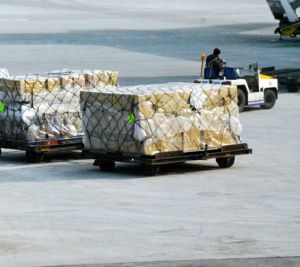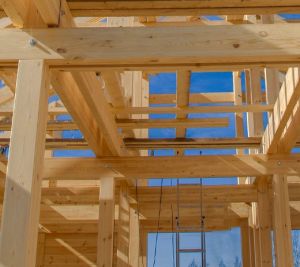Anthony Crosbie Dawson - September 2021
Anthony Crosbie Dawson - September 2021
Ongoing timber price increases this year underline the arguments for planting more productive conifers.
The UK imports approximately 80% of the timber that it requires each year.
But the increase in the price of timber worldwide during 2021 has underlined the problem with depending on timber imports – painfully so.
With pressures on both demand and supply, timber prices have been soaring. The Timber Trade Federation says a post-pandemic ‘surge in demand’ saw the average import price of softwood timber increase by 50% between January and May.
Supply-side issues, ranging from forest fires in the US to post-Brexit problems with distribution of EU imports, have also played their part.
In an ideal world, we would shift to domestic supplies. However, the UK simply hasn’t been planting enough trees to support such a shift. The UK now has one of the lowest levels of tree cover of any country in Europe, with forests accounting for only 13% of the country.
The comparable figures for France and Germany are 32% and 33% respectively. And while the Government does have plans to increase tree planting, with a commitment to a three-fold increase to 30,000 hectares a year by the end of the current Parliament, progress so far has been slow.
 Moreover, even if ministers hit their targets, there is no guarantee that the UK will be able to reduce its reliance on imported timber.
Moreover, even if ministers hit their targets, there is no guarantee that the UK will be able to reduce its reliance on imported timber.
Too often, the productive conifers we need in order to produce timber are regarded unfavourably – there is a perception that trees such as the Sitka spruce and Douglas fir have, in the past, dominated planting programmes, undermining biodiversity in the UK.
Such worries may mean that productive conifers do not get the attention they deserve as we increase the rate of planting in the years ahead, despite generating many times the volume of timber compared to a native broadleaf woodland, and doing so much quicker.
 The Government’s newly-published England Trees Action Plan sets no targets for planting by type of tree, despite pointing to the need to “encourage the use of timber in construction”.
The Government’s newly-published England Trees Action Plan sets no targets for planting by type of tree, despite pointing to the need to “encourage the use of timber in construction”.
It is important not to miss this opportunity. There is a feeling in some quarters that rewilding the country through afforestation is an exercise that is incompatible with developing economically productive forestry.
That does not have to be the case at all: planting productive conifers can deliver on both fronts.
No-one is talking about a return to the practices of the 1980s, when there was a monoculture of commercial conifer planting. But with careful planning, both productive forestry development and native broadleaf planting can be accommodated, enabling the UK to increase domestic timber production while protecting and improving biodiversity at the same time.
Certainly, demand for timber, particularly from the construction industry, is only going to increase.
The environmental context is that while the production of a single tonne of aluminium releases 9,300 kilos of carbon dioxide into the atmosphere – the figures for steel and concrete are 1,240 kilos and 159 kilos respectively – each tonne of wood absorbs a net 1,700 kilos of carbon dioxide.
 Wood can also help reduce energy consumption in the home.
Wood can also help reduce energy consumption in the home.
Wood’s cellular structure makes it a poor conductor of heat; it is 10x more insulating than concrete, 400x more insulating than steel, and 1,700x more insulating than aluminium. A 2.5cm thick timber wall panel provides better thermal resistance than an 11.5cm brick wall.
If we are going to begin transitioning towards much greater use of timber in construction projects in this country, the case for increasing the UK’s timber production looks even stronger. Even leaving aside the economic benefits that a stronger domestic timber industry could generate, including job creation, there is the emissions argument.
Importing timber generates unnecessary emissions across the supply chain, undermining some of the benefits of switching to timber-based construction practices.
The bottom line is that while the Government’s targets for afforestation are important in their own right, we now need to think in more detail about what these new forests will look like.
Get the mix right and we can build a far more substantial British timber industry, producing both economic and environmental benefits, while also rewilding and diversifying our countryside.
Get in touch

Anthony Crosbie Dawson
Director, Forestry and Private Clients
a.crosbiedawson@greshamhouse.com
The views expressed here are the author’s own at the date of publication (September 2021) and do not necessarily reflect those of Gresham House.
Past performance is not a reliable indicator of future performance.
When investing in forestry, your capital is at risk. Please ensure you read more about the risks involved.
Read more about Forestry at Gresham House >>
Read more on emerging trends and drivers of timber demand in our Global Timber Outlook >>
 Gresham House
Specialist asset management
Gresham House
Specialist asset management




